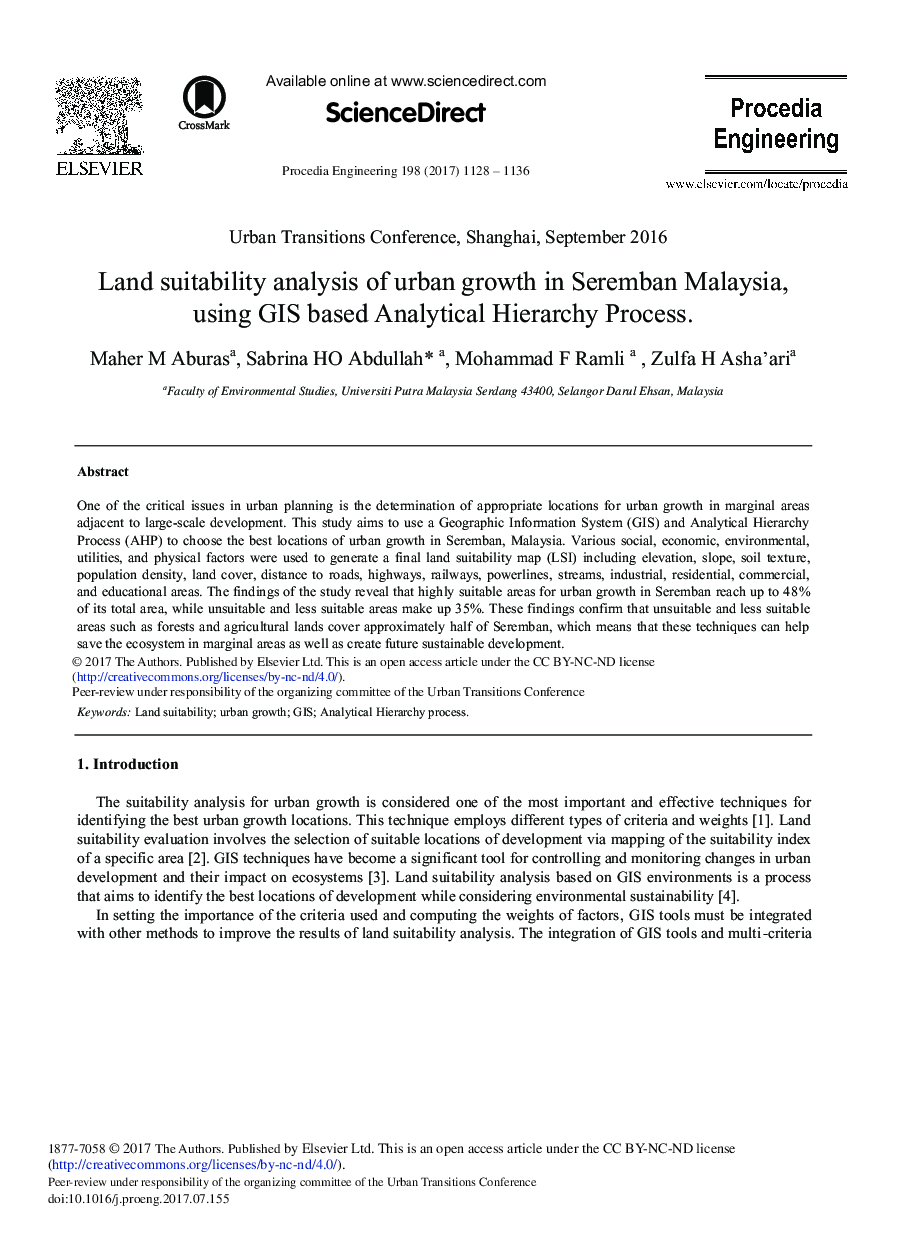| Article ID | Journal | Published Year | Pages | File Type |
|---|---|---|---|---|
| 5027467 | Procedia Engineering | 2017 | 9 Pages |
Abstract
One of the critical issues in urban planning is the determination of appropriate locations for urban growth in marginal areas adjacent to large-scale development. This study aims to use a Geographic Information System (GIS) and Analytical Hierarchy Process (AHP) to choose the best locations of urban growth in Seremban, Malaysia. Various social, economic, environmental, utilities, and physical factors were used to generate a final land suitability map (LSI) including elevation, slope, soil texture, population density, land cover, distance to roads, highways, railways, powerlines, streams, industrial, residential, commercial, and educational areas. The findings of the study reveal that highly suitable areas for urban growth in Seremban reach up to 48% of its total area, while unsuitable and less suitable areas make up 35%. These findings confirm that unsuitable and less suitable areas such as forests and agricultural lands cover approximately half of Seremban, which means that these techniques can help save the ecosystem in marginal areas as well as create future sustainable development.
Keywords
Related Topics
Physical Sciences and Engineering
Engineering
Engineering (General)
Authors
Maher M. Aburas, Sabrina H.O. Abdullah, Mohammad F. Ramli, Zulfa H. Asha'ari,
